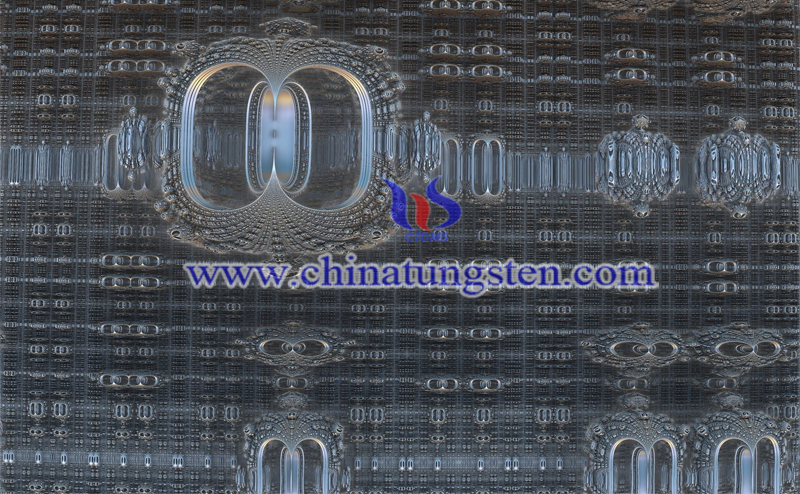USTC to Achieve Integrated Solid-State Quantum Memory Based on Rare Earth Doped Crystals
- Details
- Category: Tungsten's News
- Published on Friday, 13 March 2020 12:20
University of Science and Technology of China (USTC) has made breakthroughs in the high-performance integrated solid-state quantum memory based on rare earth doped crystals. Quantum memory is the core device for constructing a quantum network. It can effectively overcome the channel loss and thereby extend the working distance of quantum communication and can also integrate quantum computing and quantum sensing resources in different places.
It is reported that the academician Guangcan Guo's team at USTC has made important progress in the field of quantum storage. The team members Chuanfeng Li, Zongquan Zhou, and others used femtosecond laser micromachining technology to prepare high-fidelity solid-state quantum memories, and the electronic spin and nuclear spin coherence life of the rare earth ions were fully improved for the first time. Related results were published in the Physics journals Optica and Physical Review Applied on February 20 and 28, respectively.

Chuanfeng Li and Zongquan Zhou's research group has long been committed to the research of solid-state quantum memories based on rare earth doped crystals. The three technical indicators of the fidelity, number of dimensions, and multi-mode capacity of the solid-state quantum memories developed have maintained international leadership.
The current research on solid-state quantum memory faces two challenges. On the one hand, the existing solid-state quantum storage experiments use most of the storage media block crystals, this material can not directly dock the optical fiber network or integrated optical chips, it is difficult to achieve large-scale scalability applications. On the other hand, the electronic spins and nuclear spins of rare earth ions interact with phonons in the crystal, causing the coherence life of the quantum memory to be severely limited.
To solve the expansion problem, the research team used the festo-second laser micro-processing technology to etch the light waveguide in the crystal of niobium silicate for the first time and developed an integrated solid-state quantum memory. The waveguide area is 150 microns from the crystal surface and the waveguide width is 20 microns, which can be integrated with other micro-nano electronics and micro-nano optics. Due to the high-power density of the light field in the waveguide region, the control laser power required for the experiment was reduced by about 30 times compared to the power required for block crystals.
In the experiment, two kinds of optical quantum storage schemes of atomic frequency comb (AFC) and low noise echo recovery (ROSE) were demonstrated, and the storage fidelity was measured through the interference between the reference optical signal and the memory readout optical signal. The fidelity corresponding to the two schemes exceeds 99% and 97%, respectively, indicating that this integrated quantum memory has high reliability.
An effective solution to the problem of limited coherence life is to construct a pulsed electron and nuclear spin dual resonance spectrometer (ENDOR) at deep low temperature (<0.5K), thereby reducing phonons and polarizing electron spins. Due to the high thermal load in traditional commercial ENDOR systems, the operating temperature cannot generally be lower than 4K. Previously, the international academic community generally believed that deep low-temperature ENDOR was an impossible task.
After solving a series of solid-state quantum memory technical problems, the USTC team successfully built the world’s first deep-low temperature pulsed electron and nuclear spin dual resonance spectrometer, and strictly calibrated its minimum operating temperature of 0.1K. At 0.1K, the measured signal-to-noise ratio of the spin-echo signal of the rare earth element neodymium-doped yttrium silicate is 20 times higher than that at 4K, and the population life and coherence life of the electron spins reach 15 seconds and 2 respectively. At the same time, the population life and coherence life of the nuclear spins reach 10 minutes and 40 milliseconds, respectively. All four of these life span indicators achieved an increase of more than one order of magnitude compared to 4K.
- Rare Earth Manufacturer & Supplier, Chinatungsten Online: www.chinatungsten.com
- Tungsten News & Prices of China Tungsten Industry Association: www.ctia.com.cn
- Molybdenum News & Price: news.molybdenum.com.cn
- Tel.: 86 592 5129696; Fax: 86 592 5129797; Email: sales@chinatungsten.com



 sales@chinatungsten.com
sales@chinatungsten.com